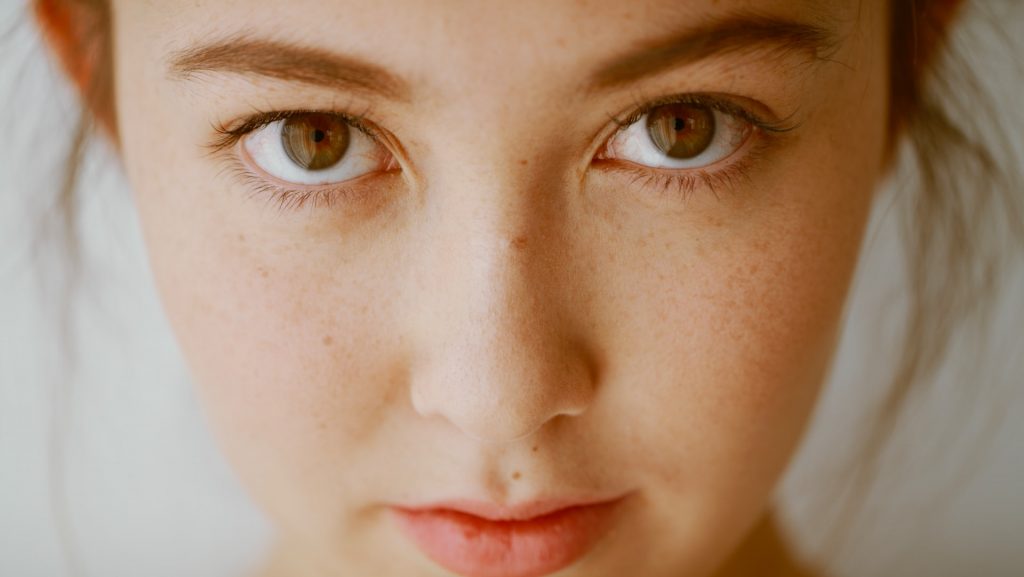This post contains affiliate links. Click here to read my affiliate policy.
Last Updated on December 16, 2023

Those suffering with acne, particularly into adulthood have more options today than ever before to help manage their symptoms. Acne is unsightly, painful and can lead to emotional distress. Sometimes a person’s acne symptoms are so severe that they need to seek acne scar removal. It’s little wonder then that so many are keen to get rid of it.
While many products exist to help keep your skin clean and clear, there’s other steps you can take to reduce acne patches. Today’s article focuses on acne and the diet, specifically, understanding the link between acne and sugar, and how certain diets may have a causal relationship with acne and how adjustments to your diet can fight off acne. These dietary recommendations not only fight off common facial acne, but also affect body acne and help to get rid of blackheads and whiteheads.
Is acne genetic? What causes it?
There are many factors which contribute to the presence of acne, but they all boil down to the same set of culprits: clogged pores, inflammation, excessive skin oil, and bacteria. An enormous range of causal factors can lead to any of these conditions, such as hormonal imbalance, which is the primary cause of adolescent acne, but also commonly affects women during menstruation. While genetics do play a role, it is usually a combination of factors that cause acne. To help prevent acne all together, it’s important to use an acne-fighting cream.
Clogged pores make acne worse.
Whiteheads and blackheads are a common acne type, they are caused by a buildup of dead skin cells that clog your pore. When the cells can’t escape, the buildup creates and unsightly whitehead in the case where the pore closes, or a blackhead if the pore remains open. There are also papules, which can be sensitive and painful. Papules can leave scars if they are squeezed or picked at, so resist the temptation to do so.
Similar to papules are pustules, which appear like whiteheads but are filled with white or yellow pus. A+void the urge to pick at these, as doing so can leave scars. Also common is nodule acne, nodules are inflamed regions under the skin that are firm to the touch and are not responsive to squeezing, so don’t try.
Should I consider a specific diet for my acne system routine?
One of the major factors affecting both your hormone balance and sebaceous excretion is your diet. Clinical trials have found both causal and corollary data linking certain foods or food categories to acne symptoms. One of the first is high-glycemic foods, that is, foods comprised of simple carbohydrates, i.e. sugars, grains, and starch.
Multiple studies carried out in different countries across the globe all reveal the same thing: people on a high-glycemic diet are more likely to suffer acne than those on a low-glycemic diet. The scientific theory is that the blood sugar spikes caused by high-glycemic foods cause a bodily reaction which, in addition to other side effects, causes both inflammation and excessive production of sebum (skin oil), leading to clogged pores and the formation of whiteheads, pustules and body acne.
Low-glycemic foods for an oily forehead and chin acne.
Low-glycemic foods are comprised of complex carbohydrates if they have any at all, for example, steel-cut oats are still a starchy grain, but have a low-glycemic index because their carbohydrate structure isn’t simple and so it doesn’t cause a metabolic spike when digested. Other low-glycemic foods include fresh veggies like carrots or sweet potatoes, certain fruits/berries such as blueberries and tomatoes, beans and lentils, and healthy-fat fish such as mackerel and salmon. Additionally, foods which contain vitamin A and E, foods high in zinc and foods which contain antioxidants can all help control inflammation, leading to healthier skin all-around, in addition to fighting off acne. So, if you’re wondering how to get rid of cystic acne, your diet might be a good place to start.
Anything else to know?
While the science isn’t solid on this next issue, there is corollary data suggesting that drinking cow’s milk is linked with acne. Just to be clear, this correlation does not apply to dairy as a category, as the same correlation is not found with substances such as cheese or yogurt. While the mechanism for this link is still a mystery, scientists have suggested that hormones in the cow’s milk may affect the hormone balance of the person ingesting it, leading to acne.
Another potential culprit, though also only a suspect with corollary information at best to substantiate claims, is chocolate. Certain individuals have been reported as experiencing breakouts after eating chocolate, so be sure to look for symptoms in case you suffer from this unfortunate side-effect. But don’t worry about it too much, or you might get stress acne, which is a whole other can of worms.
What is the best acne treatment for teens and adults?
There are many acne spot treatments out there, but something that makes a huge difference is healing acne from the inside out, by changing your diet. Key nutrients from a healthy diet fight acne from inside your body by reducing inflammation and supplying vitamins that promote hormonal balance.
There are also herbal topical treatments to help clear pores and reduce inflammation naturally, avoiding scars, and acne patches that target individual pimples If you go with acne patches be sure the patch contains hyaluronic and salicylic acid which soothes and moisturizes skin while eliminating dead cells that clog pores. Whatever your situation, there are AENO acne treatment to help. Here’s to living life to the fullest, and loving the skin you’re in!
https://www.aad.org/public/diseases/acne/causes/diet
https://www.healthline.com/health/anti-acne-diet#studies
https://www.medicalnewstoday.com/articles/322639#foods-to-improve-acne

